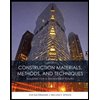Identify and determine the scope of hazardous substances Understanding the risk assessment procedure Develop skills in recognizing hazards Learning Outcomes Identify and
Aim of the coursework
- Identify and determine the scope of hazardous substances
- Understanding the risk assessment procedure
- Develop skills in recognizing hazards
Learning Outcomes
- Identify and differentiate the kinds of hazardous substances.
- Conduct hazard analysis
- List simple safety procedures and precautions to save any process.
Task:
You are expected to carry out a risk assessment in your own college/lab/workshop.
Name of assessor – put any name.
Date – put any date of the assessment.
Time – put any time of the assessment.
Work area – briefly describe the work area in terms of function, size, number of floors, number of
people.
For example: Ground floor warehouse, 900 square metres with up to 50 people.
Task being assessed – Be specific, e.g. Use of forklift truck to move goods from loading bay to racking.
You need to select FOUR hazards that are not being adequately controlled.
Common hazards include:
Working at height (e.g. working at height on a ladder 3 metres high)
Manual handling (e.g. manual handling of boxes weighing 10kg)
Slip hazards (be specific, e.g. the wet floor in reception)
Trip hazards (be specific, e.g. trailing cables)
Below is a worked example of a row (uploaded as image). You simply need to have four rows similar to this
(four hazards). Each hazard This example gives you an idea of roughly

Step by step
Solved in 2 steps with 1 images


